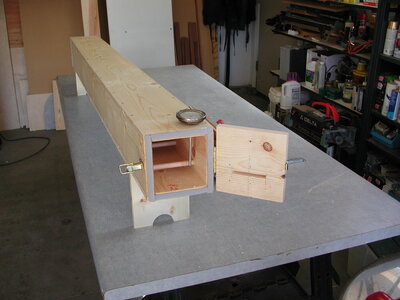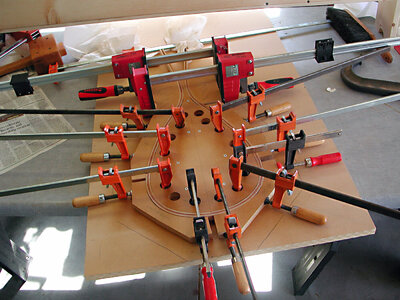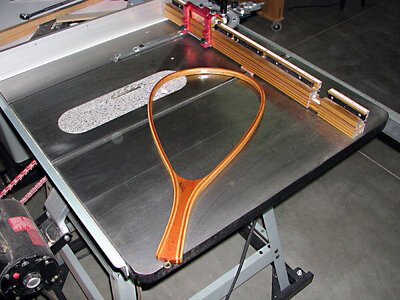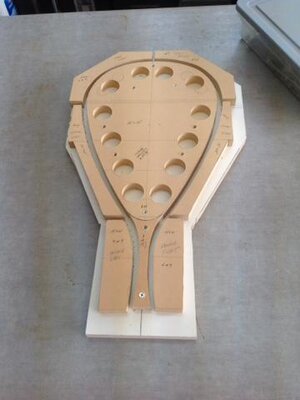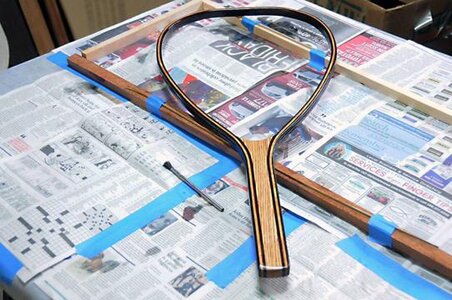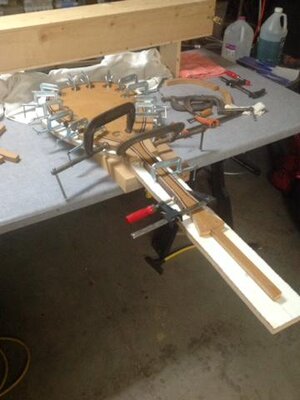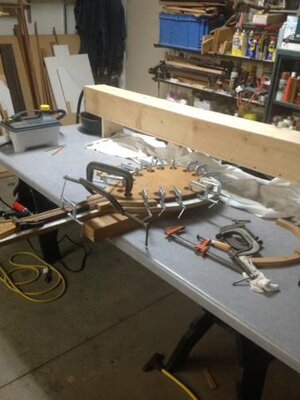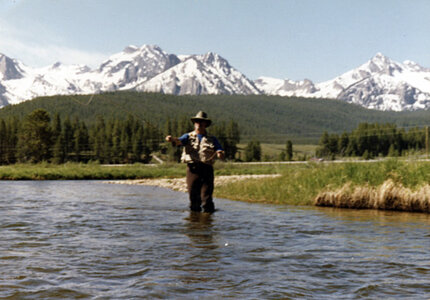what was the wood species you were bending?I'm finding that I need to know about wood grain. Some pieces I've tried snapped fairly quickly when after repeated soaking, heating and bending they almost fit the corner, Others were more pliable. My knowledge of wood types and their properties is close to zero, so it's learn as you go.
I will try your suggestion on the next critical bend, unfortunately the two problem bends have been fiddled, diddled, pounded and glued in place.It's now a cosmetic fix to "cover up" that little item.
Jan
-

Win a Free Custom Engraved Brass Coin!!!
As a way to introduce our brass coins to the community, we will raffle off a free coin during the month of August. Follow link ABOVE for instructions for entering.
You are using an out of date browser. It may not display this or other websites correctly.
You should upgrade or use an alternative browser.
You should upgrade or use an alternative browser.
Chaperon 1884 Stern Wheeler
- Thread starter Pathfinder65
- Start date
- Watchers 35
-
- Tags
- chaperon model shipways
Hi Phil,what was the wood species you were bending?
I've admitted I know very little about the woods that go into these kits. But in this case the build instructions indicate that the pieces are Limewood, aka Basswood.
Jan
Softer woods (obechi, lime wood, balsa, etc.) bend easier than hardwoods (oak, mahogany, etc.). However the thickness factors in as well. It is common practice to use multiple thin pieces that are layered to get a sharp bend. This practice was used on airplane wing tips.I'm finding that I need to know about wood grain. Some pieces I've tried snapped fairly quickly when after repeated soaking, heating and bending they almost fit the corner, Others were more pliable. My knowledge of wood types and their properties is close to zero, so it's learn as you go.
I will try your suggestion on the next critical bend, unfortunately the two problem bends have been fiddled, diddled, pounded and glued in place.It's now a cosmetic fix to "cover up" that little item.
Jan
So you could make thin veneers of the same wood, that would bend easy, and layer them to make a corner piece, that would be joined to the straights. Also steam or soaking for long periods prior to heating will help.
And finally, I have made small cuts in the back of a curved piece to allow it to bend on itself. So you could put a series of small cuts with an xacto blade on the inside of the curve.
If you’re not sure what you’re dealing with. Identify the wood type and look it up online. You can get density, janka rating, and wood working properties.
Yep I am in!
I see where you already installed the curved items you were having difficulty with. I haven't bent basswood quite as much as you did here but think I can successfully using a steam box and steam generator. I have bent oak, mahogany, wenge, basswood, redwood and others quite easily using steam. The heat softens the lignins and allows bending to take place. Then it is a matter of clamping the steamed item in a form and allowed to dry. Another consideration is thinner pieces, laminated together during the bending effort. Basswood is fairly soft and lends itself to bending. To bend easier, insure your stock has a straight grain.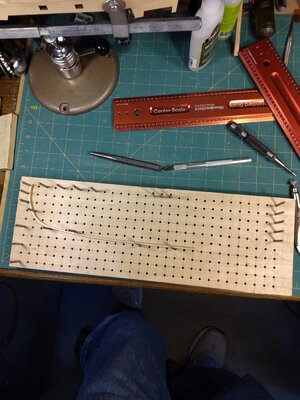
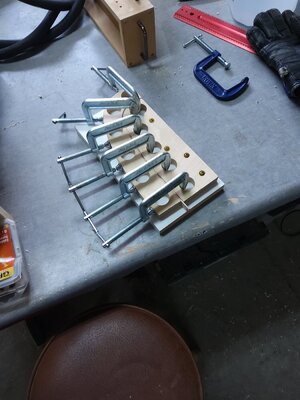
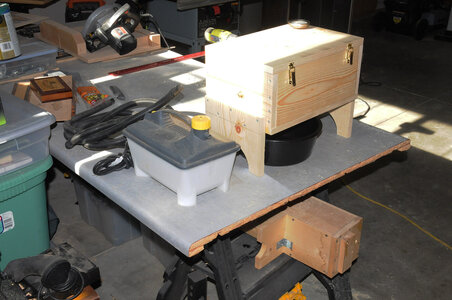
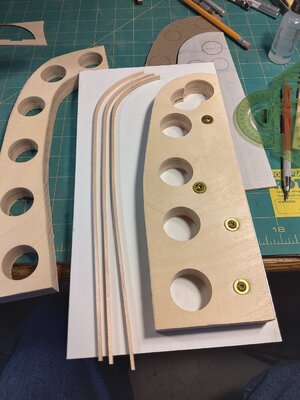




Last edited:
Kurt Konrath
Kurt Konrath
Were these self designed mold or did you find them somewhere online to buy them from?I see where you already installed the curved items you were having difficulty with. I haven't bent basswood quite as much as you did here but think I can successfully using a steam box and steam generator. I have bent oak, mahogany, wenge, basswood, redwood and others quite easily using steam. The heat softens the lignins and allows bending to take place. Then it is a matter of clamping the steamed item in a form and allowed to dry. Another consideration is thinner pieces, laminated together during the bending effort. Basswood is fairly soft and lends itself to bending. To bend easier, insure your stock has a straight grain.View attachment 273939View attachment 273941View attachment 273942View attachment 273940
@dean2, @Philski
Wow great advice and fantastic pictures to ponder. Funny thing, I made forms to bend planks, etc. for my last builds, I never thought to do the same for this build. I think the right angle bend threw me off, I just couldn't work my mind around it.
Thanks again for the help and suggestions. Another piece of build info to add to my learning curve.
Jan
Wow great advice and fantastic pictures to ponder. Funny thing, I made forms to bend planks, etc. for my last builds, I never thought to do the same for this build. I think the right angle bend threw me off, I just couldn't work my mind around it.
Thanks again for the help and suggestions. Another piece of build info to add to my learning curve.
Jan
First, I have a full woodshop and build many things, including fly fishing hand nets. I steam wood for them. So, it was easy to design what I needed to bend wood for my ship models. I use the ship laser cuts to determine the curve, cut the forms out on a bandsaw and there you have it!
View attachment 273948View attachment 273949View attachment 273950View attachment 273951View attachment 273952View attachment 273953View attachment 273954
Very nicely crafted net handles with beautiful wood tones. Maybe ahead of reading but what do you finish them with? Do you also tie the net or purchase one? Rich@dean2, @Philski
Wow great advice and fantastic pictures to ponder. Funny thing, I made forms to bend planks, etc. for my last builds, I never thought to do the same for this build. I think the right angle bend threw me off, I just couldn't work my mind around it.
Thanks again for the help and suggestions. Another piece of build info to add to my learning curve.
Jan
The finish is first Watco Danish Oil -natural color. Then after it has fully cured ( >3 days ), then sprayed several coats of spar urethane. I purchase nets (and other fly tying materials) from Netcraft.
Skills.First, I have a full woodshop and build many things, including fly fishing hand nets. I steam wood for them. So, it was easy to design what I needed to bend wood for my ship models. I use the ship laser cuts to determine the curve, cut the forms out on a bandsaw and there you have it!
View attachment 273948View attachment 273949View attachment 273950View attachment 273951View attachment 273952View attachment 273953View attachment 273954
I wonder if you also tie bamboo fly rods.. ,. . at least wrap the guides. I love the calming rhythm of fly casting but a a fly in the air doesn't catch fish. Being able to place it is the magic for an enticement and dinner!!!! RichThe finish is first Watco Danish Oil -natural color. Then after it has fully cured ( >3 days ), then sprayed several coats of spar urethane. I purchase nets (and other fly tying materials) from Netcraft.
I thought about building bamboo rods but never did anything about it. Its an art in itself and would be fun time permitting.I wonder if you also tie bamboo fly rods.. ,. . at least wrap the guides. I love the calming rhythm of fly casting but a a fly in the air doesn't catch fish. Being able to place it is the magic for an enticement and dinner!!!! Rich
Wow, that brings back great happy memories. Years ago I received a combo bamboo fly fishing rod as a BD present. That rod traveled with me on many field trips to remote areas of the state.. I usually managed to find a place to “drown” a fly.I thought about building bamboo rods but never did anything about it. Its an art in itself and would be fun time permitting.
Jan
Oh, such a joy for living in those surroundings. RIchliving here in Idaho, the fly fishing is superb!View attachment 274110
That's me fishing the Salmon River with the Sawtooths in the background. About 3 hours from our house.Oh, such a joy for living in those surroundings. RIch
That's a great picture. Would make a nice postcard.That's me fishing the Salmon River with the Sawtooths in the background. About 3 hours from our house.
Jan
My uncle lives in Boise Idaho…I have been fly fishing with him. Beautiful country up there, especially in the mountains!living here in Idaho, the fly fishing is superb!View attachment 274110
Bumblers Notebook #11: Inspiration from all your inputs.
After reading, re-reading all your helpful advice I've come up with several solutions to my numerous tries at sharp bends.
First on the agenda was a form to hold the strips I was trying to bend, I didn't seem to have enough hands (@Heinrich, "the Admiral was busy with Christmas decorating"), so a piece of 1 X 4 inch scrap was modified with a half 1 inch and 1 1/2 inch diameter "hole"and then a slope for longer pieces. ( I do have a Kolderstok iron) but it seems a good idea to "plagiarize" the Google images that I found.
The second DIY piece was to create a jig to hold the pieces while they dried, probably should have done that the first few tries at bending, I didn't think far enough ahead for this step.
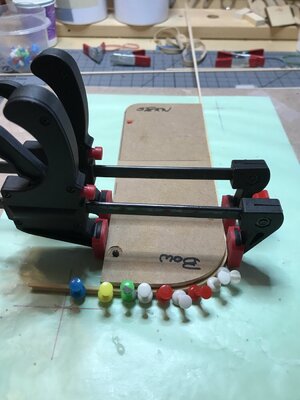
Above are the bow end of the the Hurricane deck cap rails in the jig drying, below are the stern cap rails in the jig drying.
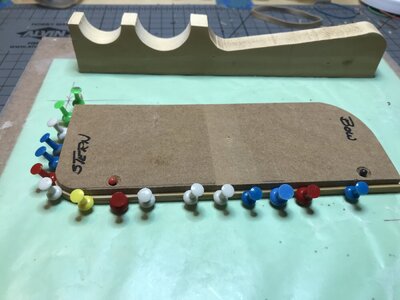
The DIY bending assistant is also visible in the picture above.
I may go back and "redo" the Boiler deck cap rails at the stern, since with all the help I've received, my "bending" technique is resulting in much better product.
Thanks again guys.
Jan
After reading, re-reading all your helpful advice I've come up with several solutions to my numerous tries at sharp bends.
First on the agenda was a form to hold the strips I was trying to bend, I didn't seem to have enough hands (@Heinrich, "the Admiral was busy with Christmas decorating"), so a piece of 1 X 4 inch scrap was modified with a half 1 inch and 1 1/2 inch diameter "hole"and then a slope for longer pieces. ( I do have a Kolderstok iron) but it seems a good idea to "plagiarize" the Google images that I found.
The second DIY piece was to create a jig to hold the pieces while they dried, probably should have done that the first few tries at bending, I didn't think far enough ahead for this step.

Above are the bow end of the the Hurricane deck cap rails in the jig drying, below are the stern cap rails in the jig drying.

The DIY bending assistant is also visible in the picture above.
I may go back and "redo" the Boiler deck cap rails at the stern, since with all the help I've received, my "bending" technique is resulting in much better product.
Thanks again guys.
Jan




